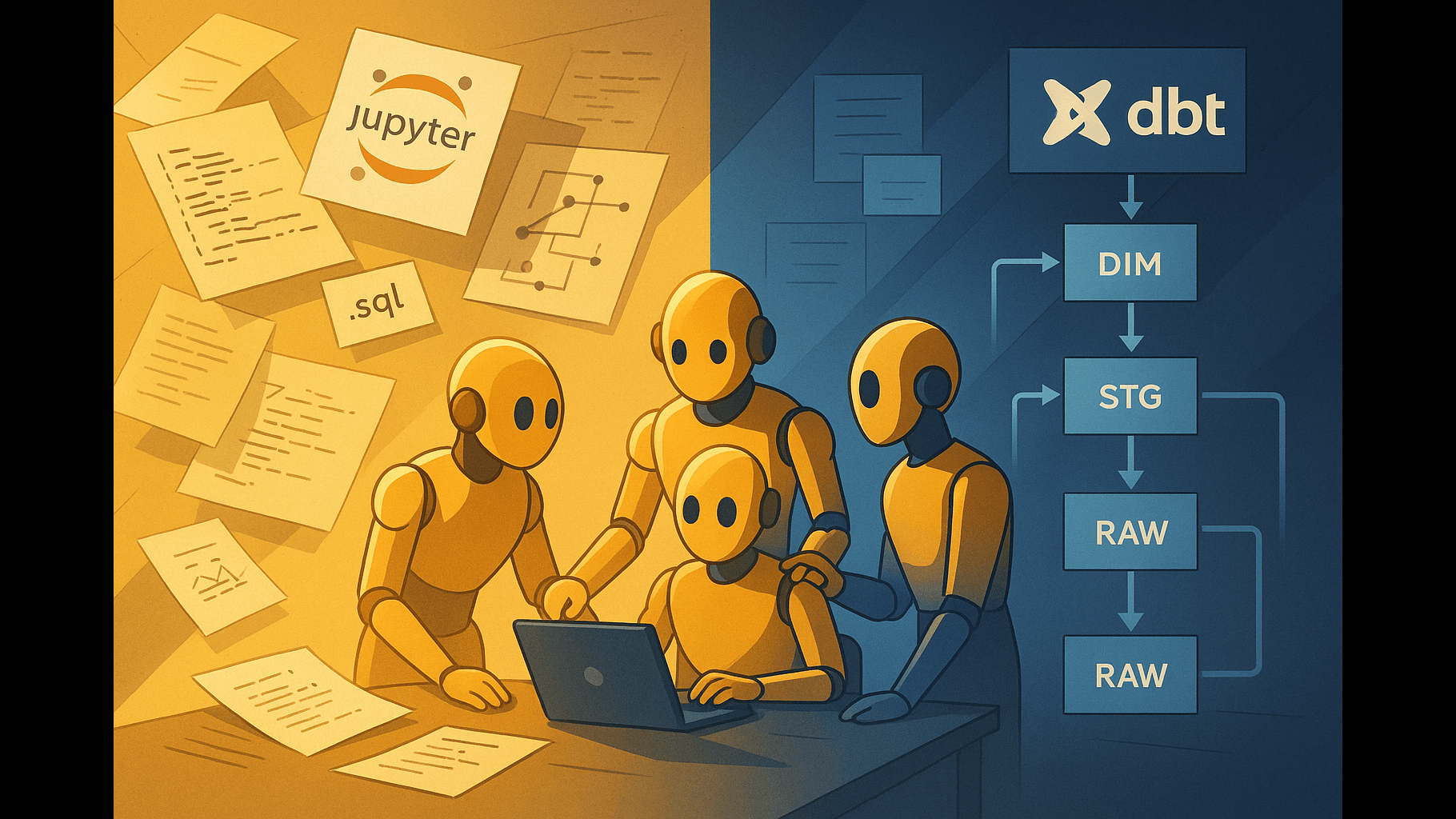· David Webb · build-log · 8 min read
Building Content Backlogs with PostHog + Astro Voting
Built audience‑driven content ranking with PostHog + Astro. Full implementation with troubleshooting, live vote counts, and UX best practices.

I had dozens of blog topics but no signal on what my audience actually wanted. Instead of guessing, you can vote now and help rank my content backlog.
Here’s how I built an audience-driven voting system using PostHog events, Astro components, and Netlify functions, plus every gotcha I hit along the way.
The Problem: No Signal on Audience Needs
As a solo founder documenting my build journey, I accumulated dozens of potential blog topics:
- “Custom Slash Commands in Claude Code”
- “Supabase Storage Optimization Tricks”
- “Creating Sub-Agents for Complex Tasks”
- “R2 Caching to Cut API Costs”
But which ones would actually provide value? I’m time poor so need data-driven ranking, not assumptions.
The Solution: Audience Voting System
Requirements:
- Public voting on upcoming topics
- Real-time vote counts
- Reusable thumbs-up component for all blog posts
- Analytics integration for tracking engagement
- Mobile-friendly UX following industry patterns
Tech Stack:
- PostHog - Event capture and analytics
- Astro - Static site generator with component architecture
- Netlify Functions - Real-time vote count API
- Tailwind CSS - Styling and responsive design
Implementation Walkthrough
1. Data Structure for Topics
First, I created a consolidated data source for upcoming topics:
// src/data/upcoming-topics.ts
export interface UpcomingTopic {
id: string; // Stable identifier for PostHog events
title: string; // Display title
summary: string; // One-line description
category?: string; // Optional categorization
}
export const upcomingTopics: UpcomingTopic[] = [
{
id: 'custom-slash-commands',
title: 'Custom Slash Commands in Claude Code',
summary: 'Build your own slash commands for faster AI-assisted development',
category: 'ai-assistants'
},
// ... simply copy and paste to add more topics or edit the sort order
];Key Decision: The id field is immutable once voting starts. Changing it creates a new vote stream, so I made it descriptive and stable.
2. PostHog Event Tracking
I used PostHog to capture topic_vote events with structured properties:
// Event structure
posthog.capture('topic_vote', {
topic_id: 'custom-slash-commands',
topic_title: 'Custom Slash Commands in Claude Code',
timestamp: new Date().toISOString()
});Environment Variables:
# .env.local (local development)
POSTHOG_PROJECT_ID=your_project_id # Public, safe to commit
POSTHOG_API_KEY=your_api_key # SECRET - add to .gitignore
POSTHOG_HOST=https://us.i.posthog.com # Public, safe to commitSecurity Notes:
- Add
.env.localto.gitignoreto prevent committing secrets - Set
POSTHOG_API_KEYas an environment variable in Netlify dashboard, mark as a secret POSTHOG_PROJECT_IDandPOSTHOG_HOSTare safe to commit
3. Reusable ThumbsUpButton Component
The core voting component needed to work in multiple contexts:
---
// src/components/ui/ThumbsUpButton.astro
export interface Props {
topicId: string;
topicTitle: string;
initialVoteCount?: number;
compact?: boolean;
className?: string;
}
const { topicId, topicTitle, initialVoteCount = 0, compact = false, className = "" } = Astro.props;
const buttonStyles = compact
? `thumbs-up-btn flex items-center gap-1 px-2 py-1 text-sm rounded ${className}`
: `thumbs-up-btn flex items-center gap-2 px-3 py-2 rounded-md ${className}`;
---
<button
class={buttonStyles}
data-topic-id={topicId}
data-topic-title={topicTitle}
>
👍 <span class="vote-count font-bold" id={`votes-${topicId}`}>
{initialVoteCount}
</span>
</button>
<script>
// Event delegation for multiple button instances
document.addEventListener('click', (e) => {
if (e.target.closest('.thumbs-up-btn')) {
e.preventDefault();
const button = e.target.closest('.thumbs-up-btn');
const topicId = button.dataset.topicId;
const topicTitle = button.dataset.topicTitle;
if (topicId && topicTitle && window.posthog) {
// Optimistic update
const countElement = document.getElementById(`votes-${topicId}`);
if (countElement) {
const currentCount = parseInt(countElement.textContent) || 0;
countElement.textContent = currentCount + 1;
}
// Track in PostHog
window.posthog.capture('topic_vote', {
topic_id: topicId,
topic_title: topicTitle,
timestamp: new Date().toISOString()
});
// Fetch real count after delay for PostHog processing
setTimeout(async () => {
const response = await fetch(`/.netlify/functions/get-vote-counts?topicIds=${topicId}`);
if (response.ok) {
const data = await response.json();
const realCount = data.voteCounts[topicId] || 0;
const currentDisplayCount = parseInt(countElement.textContent) || 0;
// Only update if real count is higher (prevents reversion due to ingestion latency)
if (realCount >= currentDisplayCount) {
countElement.textContent = realCount;
}
}
}, 5000);
}
}
});
</script>4. Real-time Vote Count API
PostHog has ingestion latency, so I created a Netlify function to fetch live counts:
// netlify/functions/get-vote-counts.js
exports.handler = async (event, context) => {
if (event.httpMethod !== 'GET') {
return { statusCode: 405, body: JSON.stringify({ error: 'Method not allowed' }) };
}
const { topicIds } = event.queryStringParameters || {};
if (!topicIds) {
return { statusCode: 400, body: JSON.stringify({ error: 'topicIds parameter required' }) };
}
const projectId = process.env.POSTHOG_PROJECT_ID;
const apiKey = process.env.POSTHOG_API_KEY;
const host = process.env.POSTHOG_HOST || 'https://us.i.posthog.com';
const topicIdArray = topicIds.split(',');
const voteCounts = {};
for (const topicId of topicIdArray) {
try {
const response = await fetch(
`${host}/api/projects/${projectId}/events/?event=topic_vote&properties=${encodeURIComponent(JSON.stringify({ topic_id: topicId }))}`,
{
headers: {
'Authorization': `Bearer ${apiKey}`,
'Content-Type': 'application/json'
}
}
);
if (response.ok) {
const data = await response.json();
voteCounts[topicId] = data.results?.length || 0;
} else {
voteCounts[topicId] = 0;
}
} catch (error) {
console.error(`Error fetching votes for ${topicId}:`, error);
voteCounts[topicId] = 0;
}
}
return {
statusCode: 200,
headers: {
'Content-Type': 'application/json',
'Access-Control-Allow-Origin': '*',
'Cache-Control': 'no-cache'
},
body: JSON.stringify({ voteCounts })
};
};5. Coming Up Page
The main page displays all upcoming topics with voting:
---
// src/pages/coming-up.astro
import Layout from '~/layouts/PageLayout.astro';
import { upcomingTopics } from '~/data/upcoming-topics';
import { getPostHogVoteCounts } from '~/utils/posthog';
import ThumbsUpButton from '~/components/ui/ThumbsUpButton.astro';
const topicIds = upcomingTopics.map(topic => topic.id);
const voteCounts = await getPostHogVoteCounts(topicIds);
---
<Layout metadata={{ title: "Coming Up - What Should I Build Next?" }}>
<section class="px-6 py-12 mx-auto max-w-4xl">
<h1 class="text-4xl font-bold mb-8">Coming Up</h1>
<p class="text-xl text-gray-300 mb-12">
Help me rank what to build and write about next. Your votes directly influence my content roadmap.
</p>
<div class="grid gap-6 md:grid-cols-2">
{upcomingTopics.map((topic) => (
<div class="bg-gray-900 border border-gray-700 rounded-lg p-6 hover:border-cyan-400 transition-colors">
<div class="flex justify-between items-start mb-4">
<h3 class="text-xl font-semibold text-white pr-4">{topic.title}</h3>
<ThumbsUpButton
topicId={topic.id}
topicTitle={topic.title}
initialVoteCount={voteCounts[topic.id] || 0}
/>
</div>
<p class="text-gray-300 mb-4">{topic.summary}</p>
{topic.category && (
<span class="inline-block px-2 py-1 bg-gray-800 text-cyan-400 text-sm rounded">
{topic.category}
</span>
)}
</div>
))}
</div>
</section>
</Layout>Issues I Hit (And How to Fix Them)
1. String Interpolation Bug
Problem: PostHog events weren’t being captured. Network showed “request missing data payload” errors.
Root Cause: I tried to use Astro props directly in JavaScript like this:
const topicIdValue = "{topicId}"; // ❌ This is literal string "{topicId}"Fix: Read values from data attributes in the click handler:
const button = e.target.closest('.thumbs-up-btn');
const topicId = button.dataset.topicId; // ✅ Gets real value2. Multiple Component Conflicts
Problem: With multiple voting buttons on a page, document.querySelector() always targeted the first button.
Fix: Use event delegation with e.target.closest():
document.addEventListener('click', (e) => {
if (e.target.closest('.thumbs-up-btn')) {
const button = e.target.closest('.thumbs-up-btn');
// Now we have the actual clicked button
}
});3. PostHog Ingestion Latency
Problem: Vote counts would show +1 optimistically, then revert to the previous count when fetching real data.
Root Cause: PostHog has ~2-5 second processing delay between event capture and API availability.
Fix:
- Increase delay to 5 seconds
- Only update display if real count ≥ current display count
- Prevents reverting optimistic updates
4. Debug Mode Essential
Always enable PostHog debug mode during development:
posthog.init('your-key', {
api_host: 'https://us.i.posthog.com',
debug: true, // Shows what's being sent
disable_compression: true,
request_batching: false
});Testing Approach:
- CLI test: Use PostHog CLI to verify events are captured
- Browser console: Check
window.posthogobject and debug output - Network tab: Verify API calls are being made correctly
- PostHog event definitions: Go to Data Management → Event Definitions → search for ‘topic_vote’ to validate events are recorded

UX Best Practices for Engagement Elements
Blog Post Layout Pattern
Research Finding: Following Medium/GitHub patterns, I put all engagement actions on the same horizontal line.
Implementation:
<!-- Inline engagement bar -->
<div class="flex justify-between items-start">
<!-- Left: Content metadata -->
<PostTags tags={post.tags} />
<!-- Right: User actions -->
<div class="flex items-center gap-4">
<ThumbsUpButton topicId={voteKey} topicTitle={post.title} compact={true} />
<SocialShare url={url} text={post.title} />
</div>
</div>Benefits:
- ✅ Single UX scan line for all engagement actions
- ✅ Reduced cognitive load
- ✅ Mobile-friendly grouped targets
- ✅ Industry-standard pattern users expect
Responsive Design Considerations
/* Mobile: Stack vertically with proper spacing */
.flex-col sm:flex-row gap-4 sm:gap-0
/* Desktop: Single horizontal line */
.justify-between items-startPerformance Considerations
1. SSR for Initial Counts
Fetch vote counts server-side to avoid loading states:
const voteCounts = await getPostHogVoteCounts(topicIds);2. Optimistic Updates
Immediate UI feedback while background sync happens:
// Show +1 immediately
countElement.textContent = currentCount + 1;
// Sync with real data after delay
setTimeout(() => fetchRealCount(), 5000);3. Batch API Calls
The Netlify function accepts multiple topic IDs:
/.netlify/functions/get-vote-counts?topicIds=topic1,topic2,topic3Accessibility Implementation
I added proper accessibility features to the voting button:
aria-labelwith topic title and current vote countaria-describedbylinking to the vote count elementaria-live="polite"on vote count for screen reader updatesrole="button"for explicit button semantics- Dynamic
aria-labelupdates when vote count changes - Uses
politeinstead ofassertiveto avoid interrupting user workflow
UX Design Choices
I focused on making voting frictionless and rewarding:
- Clear triggers: Inline engagement bar makes voting obvious
- One-tap action: Optimistic +1 feedback with real count sync
- Visible progress: Live vote counts via Netlify function
- Closed loop: Posts reference voter impact to show results
Current Implementation:
- Simple 👍 button with vote count
- ARIA labels for screen reader accessibility
- Optimistic +1 update with real count sync
Measuring Success
Analytics I Track:
- Vote engagement rate per topic
- Vote patterns by user session
- Content completion rate for high-voted topics
- Time from vote to published content
PostHog Insights I Use:
- Create funnel: Page view → Vote click → Content engagement
- Segment by topic category performance
- A/B test different voting UX patterns
Next Steps
Future Enhancements I’ll Consider:
- Prevent duplicate votes per session/device
- Add vote animations and micro-interactions
- Email notifications when high-voted content is published
- Move topics into CMS for non-technical team members
- Add comment/suggestion functionality
- Content request form for audience-submitted topics
Key Takeaways
- Start simple - Basic voting provides 80% of the value
- Reusable components - Build once, use everywhere (Coming Up page, blog posts)
- Event delegation - Critical for multiple component instances
- Optimistic UI - Handle API latency gracefully
- Follow UX patterns - Users expect familiar engagement layouts
- Real-time data - Static counts feel broken in 2025
Your vote shapes what I ship next. Want to see this in action? Check out the Coming Up page and vote on what you’d like me to build next!
Ready to build your own voting system? Start with the PostHog docs and Astro components guide.



